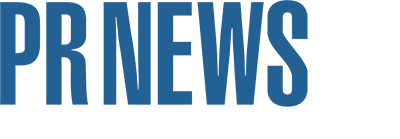“Culture eats strategy for breakfast.” - Peter Drucker
When Peter Drucker speaks, business leaders listen. And it’s clear that Drucker thinks highly of organizational culture as a driving force. But not all organizations can have a culture that is innovative, like Apple or customer-centric like Zappos. But one thing is certain, if you have an organization, you will have a culture. The question is, what kind of culture is it? One that is strong and helps power the organization like a well-oiled machine, or one that is weak, where there is poor alignment with values and thus, control must be exercised through bothersome procedures and bureaucracy?
PR News spoke to a variety of communicators who have had experience with culture change, and the challenges faced in implementation. The common thread among them? Culture change begins at the top.
LEADERSHIP SETS THE TONE
“Culture is a task that leaders must own,” says Tyler Durham, managing director at Ketchum Pleon, the PR agency’s change management consultancy. “Culture is about behaviors day in and day out, and leaders best demonstrate that change.”
Think about it, says Durham: strong corporate cultures have senior leadership that deploy innovative and often audacious strategies: Steve Jobs of Apple, Tony Hsieh of Zappos and Howard Schultz of Starbucks come to mind.
Strong leadership is critical in maintaining an organizational purpose, values and vision, says Durham. “Leaders must set the example by living the elements of culture: values, behaviors, measures and actions,” he says.
Gavin Drake, VP of marketing at publishing software company Quark, seconds the notion that a high leadership quotient is needed for strong culture.
Quark, the maker of publishing software profiled in the 6/14/2010 issue of PR News, underwent a total business and company culture makeover within the last five years, and its comeback can be attributed to the actions of CEO Ray Schiavone. “We have a leader who is open, honest and passionate, and makes people feel that they are part of the team,” says Drake. Before Schiavone came on the scene at Quark in 2007, continues Drake, back-office politics and autocratic leadership ruled the day. Not so anymore. Yet it’s taken nearly five years—and still counting, says Drake, to change Quark’s culture from what it was.
“We have a leader who is open, honest and passionate, and makes people feel that they are part of the team.” — Gavin Drake, CMO, Quark
SHIFTS OVER TIME
That’s the challenge with changing culture—it can’t happen overnight. In fact, says Mike McDougall, an independent communications consultant, culture can never be completely changed—it can shift, though. “Shifts must be done over time,” says McDougall, and the important strategy is being able to demonstrate the value of the shift to employees.
“Putting a poster on a wall and issuing a set of cultural mandates just doesn’t cut it,” says McDougall.
Sustaining a culture shift is something that Quark’s Drake says is difficult, particularly when the company does not have a dedicated internal comms team (corporate communications is folded into Drake’s marketing department). “When you’re focused on the external, it’s easy to forget about culture,” says Drake. “We keep reminding ourselves to keep up the internal work.”
And that work includes simple tactics like making sure all external happenings are communicated to the staff, including news releases, customer newsletters and quarterly client win announcements.
BACK TO BASICS
Tamara Brandt, change management manager at Whirlpool Corp., has just started with a culture shift initiative, in Whirlpool’s engineering department.
New leadership in the department proposed a “getting back to basics” approach, which takes the emphasis off the complexity of the engineering group, says Brandt. “It will change to more of a learning environment,” she says, a culture that takes into account new skills that will be needed in the future to get work done.
A survey of close to 6,000 engineers—with questions concerning leadership, openness of communications and more—has just closed, and Brandt and the team are compiling results.
Only then can the bulk of culture shift process be set into motion—after which, says McDougall, you can go ahead and put those posters on the wall. PRN
CONTACT:
Tyler Durham, tyler.durham@ketchum.com; Mike McDougall, mlmcdougall@gmail.com; Gavin Drake, gdrake@quark.com; Tami Brandt, tamara_l_brandt@whirlpool.com.
